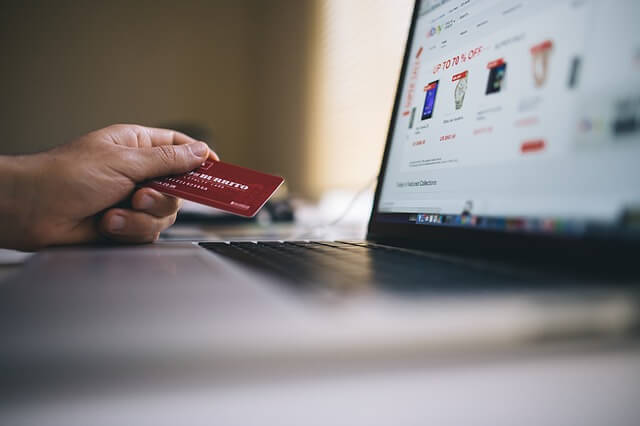Ecommerce Trends Improving Customer Experience
The year of the global pandemic fundamentally changed the retail industry, especially the world of e-commerce. As we all spent time indoors sheltered in place, online sales skyrocketed. Indeed, U.S. eCommerce sales grew approximately 40.3% in 2020, accounting for 21% of total retail sales, up from 15.8% in 2019. Retail stores and online merchants were forced to adapt and evolve to changing consumer needs and make themselves available to all consumers, regardless of their geographical location in retail’s most monumental shopping year in recent memory. Here are some of the trends that emerged out of 2021 that you can adopt for your business to improve your customers’ experience for 2022 and beyond!
Purpose-Driven Ecommerce.
In the wake of the Black Lives Matter protests of 2020, as well as mounting concerns among the younger generation regarding ethical, sustainable consumption, the past year marked a sea change in consumer demands for purpose-driven ecommerce. Being purpose-driven means having a broader mission beyond delivering a good quality product. Carving out a purpose-driven ethos for your brand can help you attract new customers and build a loyal customer base whose consumer values or beliefs align with yours.
Whether your brand is committed to zero-carbon emissions, fair trade, ethical sourcing, or equality, purpose-driven brands are taking center stage in 2021, and emphasizing your brand’s purpose can help attract like-minded customers to your ecommerce site. According to a study by Flow, 81% of global consumers strongly believed that companies should commit to protecting the environment, while 25% of consumers stated that they would be willing to pay extra for fair trade or ethically sourced goods. As part of a new initiative to promote body equality and normalize size inclusivity across their brand, they will be the first retailer in 2021 to offer sizes 0-30 and XS-4X for all women’s styles at price parity.
Grocery Ecommerce.
In 2020, we experienced a nearly 62% revenue increase in ecommerce grocery sales as stay at home orders made consumers wary of visiting the grocery store in person. With this new trend, the coming years represent a great opportunity for grocery suppliers to take advantage of a consumer appetite for online grocery goods and build robust ecommerce platforms. In fact, by 2026, economists project that grocery ecommerce sales will account for 20% of the total grocery industry sales. According to CPG market researcher Edge by Ascential, Amazon is projected to double its edible grocery sales and beverages over the next five years, holding an e-commerce lead over its rival, Walmart.
Grocery items that consumers traditionally have been reluctant to buy online, such as perishable goods like dairy, fresh meat, produce and frozen groceries have grown significantly, in line with a general trend of consumers turning to the internet to conveniently buy household goods and get them delivered the same day. Contactless grocery-delivery partnerships with third-party shopper sites such as Instacart, DoorDash, and GoPuff have proven to accelerate the growing grocery ecommerce industry in 2021.
Local Delivery.
For many years, retail and eCommerce businesses have been looking for ways to accelerate parcel shipping to their customers. The pandemic pressures of 2020 and 2021 forced brands to innovate to meet unprecedented online consumer demands. One-day shipping has become nearly as ubiquitous as two-day shipping as eCommerce retail giants like Amazon transition to housing inventory in smaller, local locations, to ensure that order deliveries are faster and easier than ever before.
More and more companies are investing in last-mile tracking, which allows customers to track exactly where their packages are in the last leg of the product’s delivery. Aside from the basic desire of consumers to know where their packages are because of their anticipation and excitement for the product that is inside, more consumers have been attracted to eCommerce sites who offer last-mile tracking especially if they are ordering gifts to fulfill a time-sensitive event, such as a birthday or upcoming holiday. Omnichannel fulfillment methods – such as curbside pickup (BOPAC) or a customer service desk (BOPIS) have helped businesses get their products to consumers faster despite product availability issues, shipping time, and handling costs. Providing a number of fulfillment options for your consumers can help them get the product they need on time, and save you the hefty cost of shipping and handling fees. Third party platforms such as Uber, and omnichannel delivery providers can also help you fulfill this need.
Video Ecommerce.
According to Kaizad Hansotia, founder and CEO of SWIRL, “every consumer-facing brand is going to need an innovative video experience on their website,” in 2021. As retailers face disruption in every industry – fashion to food to drink – online stores are struggling to replicate the human experience of shopping customers used to revel in in their brick and mortar stores. Video eCommerce represents an innovative solution to simulating that experience.
Brands such as Moda Operandi, Neiman Marcus, Nordtrom, and Farfetch partnered with video commerce platforms to create live Streaming video shopping events that brought the mall to consumers’ couches and bedrooms as they shopped along at home. Big tech players such as TikTok, Snapchat, Facebook, and Instagram have invested in video eCommerce to sell products to millions of users within their apps.
The short-form video content and parasocial effects of the content on TikTok – which typically consists of creators talking directly into the camera – provides immense potential for advertisers to create partnerships with influencers to sell all kinds of products, from leggings, to scarves, to milk frothers to cleaning products. In fact, TikTok is so notorious for helping advertisers sell products that some retailers have created #TikTokMadeMeBuyIt sections in their stores to help consumers easily locate cult favorite products that they saw on the app. The fact that the videos are made by real people, and not a brand, adds a layer of authenticity and unprofessionalism that appeals to users and causes them to buy products more readily on TikTok than on another app.
The TikTok algorithm curates a hyper-specific feed for users, not based on who they’re following like other apps such as Instagram, but rather, based on what content they like, share, and view repeatedly. Its hyper-specific algorithm helps curate the user’s exact interests, representing huge potential for brands to target users who will actually turn into conversions as they purchase their products.
“Dark Stores”
In light of sweeping shutdowns of brick and mortar stores in 2020, many retailers have closed down their in person stores, instead converting them to warehouses to store products for consumers ordering online. Some retailers may opt to make their stores go permanently “dark,” while others may decide to shut down their stores during the holiday seasons, instead hiring employees to purely complete order fulfillments beyond general operating hours to meet high volumes of online orders on time.
None of these trends should come as a surprise – it is no mystery that eCommerce traffic has exploded in the last couple of years. We hope these eCommerce trends have inspired you, and you may consider adopting some of these customer experience modifications to help your company capitalize on the great potential available in online shopping today!


